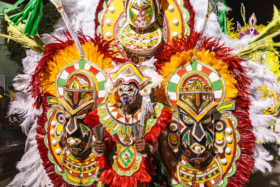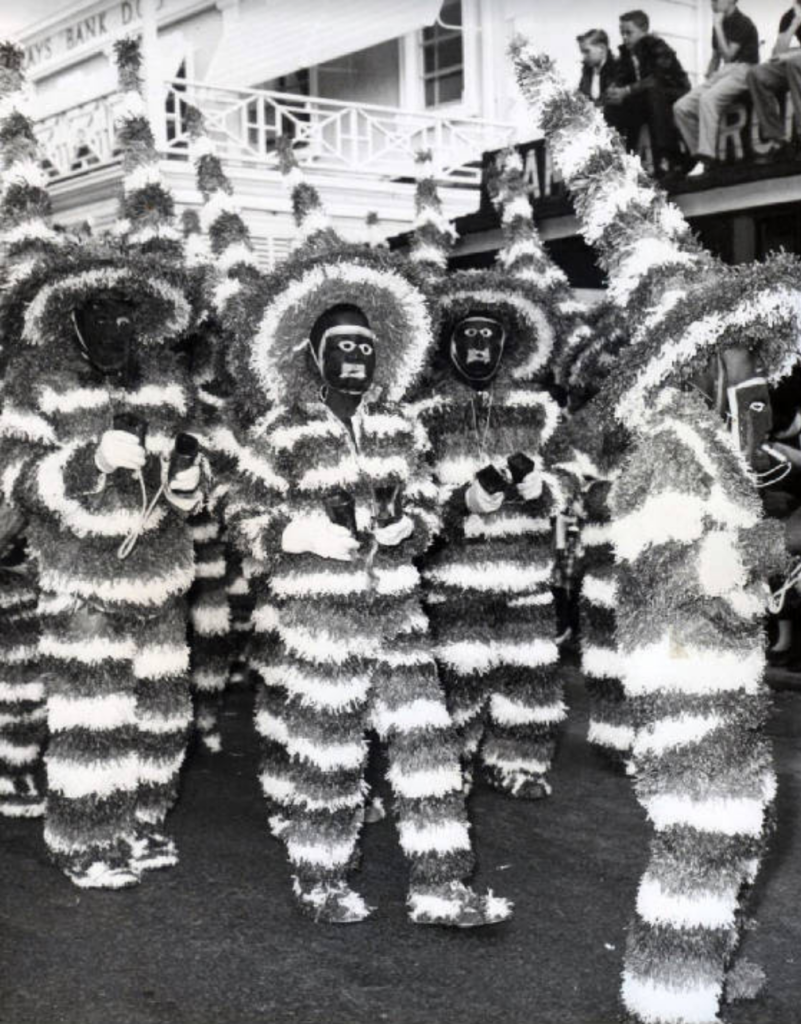

Every Boxing Day and New Year’s Day, pulsating rhythms and waves of mesmerizing colors overflow the quaint, cobbled streets of downtown Nassau as Bahamians celebrate Junkanoo, the country’s most spectacular cultural event! Largely influenced by African traditions, Junkanoo expresses the vibrant culture of the Bahamian people, whose profound creativity is best displayed through the festival’s extravagant costumes and eclectic music, which can make anyone shake and dance!!!
In this blog post, we’ll tell you more about Junkanoo, from its history and costumes to its lively music!!
History

Emerging in the 17th century as a masquerade celebration, many scholars believe Junkanoo derives its name from John Canoe, an African tribal chief who, when brought to the West Indies as a slave, pushed for the right to celebrate with his people. On Boxing Day, when slaves were free from performing any labor, they celebrated with traditional music and dance. Eventually, the Christmas season became the biggest celebratory period in The Bahamas, and Junkanoo, with its festive atmosphere, became a major cultural attraction.
Compared to today, the earliest Junkanoo festivals were modest affairs, featuring simple facial paintings, in addition to costumes made from cloth, sponges, fringe paper, and leaves. And though Junkanoo music has largely remained the same over the centuries, early Junkanooers used home-made instruments, such as conch shells, horns, and poinciana pods, that are no longer seen in festivals today. Furthermore, modern Junkanooers frequently employ the use of brass instruments, creating a riveting melody that puts listeners into an intoxicating, hypnotic trance.
Costumes

Over the years, with the introduction of new resources and technology, Junkanoo costumes have experienced a dramatic change, evolving from simple pieces to extravagant designs adorned with a plethora of colorful decorations.
In the 17th century, slaves, using a flour paste, decorated their faces as they celebrated and rang sweet sounds of music into the air on Boxing Day. However, in later years, they dressed more elaborately during these celebrations, often wearing wire masks held on a stick.
In the late 1920’s, the sponging industry comprised a significant portion of the Bahamian economy, and Junkanooers wore costumes made entirely from sea sponges. As the sponging industry waned in the mid 1930’s, newspapers and multicolored crepe paper became the primary materials used for Junkanoo costumes, giving way to the magnificent and colorful costumes we see today.
During contemporary Junkanoo parades, huge and skillfully-crafted floats and costumes dominate the clear night sky, each elaborately displaying a participating group’s theme. Made from a vast array of materials, including cardboard, wire, styrofoam, and paper mache, these costumes and floats not only illustrate the creative talent of our people but also how far we’ve come as a nation.
Music

Characterized by infectious and pulsating melodies, Junkanoo music reflects the diverse cultural backgrounds of the Bahamian people, as it incorporates West African drum rhythms, American blues, and Caribbean culture. During a Junkanoo parade, loud cheers and screams can be heard throughout the streets as the bombastic sounds of the instruments echo in the vibrating air.
While earlier Junkanoo music incorporated home-made instruments, today’s Junkanooers use a selection of modern instruments, namely drums, cowbells, brass horns, and whistles, to entice the audience and get them to stand up on their feet!
If you’d like to learn more about The Bahamas’ vibrant culture, book a tour on our website, www.marveloustours242.com!!
Recent Comments